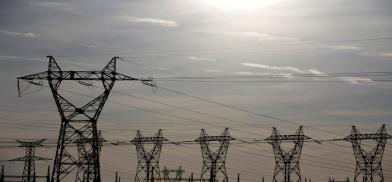Nepal seeks $400 million in loan from India for 400 kV transmission line; sees potential in sub-regional energy trade
The World Bank has estimated Nepal’s hydropower potential around 20,000 MW. So aligning its energy policy closely with the BBIN (Bangladesh, Bhutan, India, Nepal) sub-regional vision will provide it with the much-needed potential for the export of this surplus energy to larger power consumers like India and Bangladesh

Nepal is seeking $400 million in funding from India for building a 400kV power transmission line proposed along with its Postal Highway—in addition to the under-construction East-West 400 kV power line—to improve the country’s aging transmission infrastructure. The two lines stretching from the country’s east to west will act as an alternative to each other.
The 975 km-long Postal Highway, also known as Hulaki Rajmarg, is one of the oldest highway roads in the country, which cut across the entire width of Nepal. Due to improved connectivity, a lot of industries and factories are coming up in the region, making it a suitable route for the proposed high-power transmission line amid the growing power demand.
“As the proposed transmission lines will be closer to the border with India, it will be easier to develop cross-border connectivity for energy trade between the two countries,” Kul Man Ghising, managing director of the Nepal Electricity Authority (NEA), was quoted in The Kathmandu Post.
“We have already assigned a consultant to conduct a study on the project’s feasibility,” he added. For now, the capacity of the line will be 220kV, but it can be upgraded to 400kV in the future. It will also help provide multiple transmission connectivity between Nepal and India because of the shorter distance.
Although Nepal has become a net electricity surplus country last year, several regions, especially in the west and the Terai belt, still depend on power supply from India during summer months, when the capacity of hydropower generation drops significantly.
Improving the country's power sector has become a priority not only for the Nepal government but also for India, a power-hungry country. With the rising coal prices across the world, there is renewed push and enthusiasm for enhancing bilateral cooperation in the hydropower sector.
Recently, India’s power regulator approved a proposal granting Nepal permission to export 325MW of electricity to the Indian market in the coming months of winter, a period when Kathmandu’s power generation peaks, touching 2300MW, while its domestic demand remains at around 1700 MW.
The World Bank has estimated Nepal’s hydropower potential around 20,000 MW. So aligning its energy policy closely with the BBIN (Bangladesh, Bhutan, India, Nepal) sub-regional vision will provide it with the much-needed potential for the export of this surplus energy to larger power consumers like India and Bangladesh.
For India, bilateral and multilateral cooperation in the energy sector under its regional economic cooperation remains a key part of its Neighbourhood First Policy. The ratification of the Millennium Challenge Corporation compact, a US foreign policy aid program with a $500 million grant for Nepal, will also help the Himalayan country to develop its transmission infrastructure.
(SAM)








Post a Comment